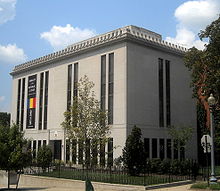Chad
By the end of the 1st millennium AD, a series of states and empires had risen and fallen in Chad's Sahelian strip, each focused on controlling the trans-Saharan trade routes that passed through the region.While many political parties participated in Chad's legislature, the National Assembly, power laid firmly in the hands of the Patriotic Salvation Movement during the presidency of Idriss Déby, whose rule was described as authoritarian.Chad has a poor human rights record, with frequent abuses such as arbitrary imprisonment, extrajudicial killings, and limits on civil liberties by both security forces and armed militias.In the 7th millennium BC, ecological conditions in the northern half of Chadian territory favoured human settlement, and its population increased considerably.[35] In May 2016, he was found guilty of human-rights abuses, including rape, sexual slavery, and ordering the killing of 40,000 people, and sentenced to life in prison.Déby unilaterally modified the constitution to remove the two-term limit on the presidency; this caused an uproar among the civil society and opposition parties.[43] Chad's army announced the death of Déby on 20 April 2021, following an incursion in the northern region by the FACT group, during which the president was killed amid fighting on the front lines.That transitional council has replaced the Constitution with a new charter, granting Mahamat Déby the powers of the presidency and naming him head of the armed forces.[46][47] Chad is bounded to the north by Libya, to the east by Sudan, to the west by Niger, Nigeria and Cameroon, and to the south by the Central African Republic.[49] The dominant physical structure is a wide basin bounded to the north and east by the Ennedi Plateau and Tibesti Mountains, which include Emi Koussi, a dormant volcano that reaches 3,414 metres (11,201 ft) above sea level.[45] Although in the 21st century it covers only 17,806 square kilometres (6,875 sq mi), and its surface area is subject to heavy seasonal fluctuations,[51] the lake is Africa's second largest wetland.In the Sahel, a steppe of thorny bushes (mostly acacias) gradually gives way to the south to East Sudanian savanna in Chad's Sudanese zone.[56][57] Elephants, lions, buffalo, hippopotamuses, rhinoceroses, giraffes, antelopes, leopards, cheetahs, hyenas, and many species of snakes are found here, although most large carnivore populations have been drastically reduced since the early 20th century.This has also caused loss of natural habitat for wild animals; one of the main reasons for this is also hunting and livestock farming by increasing human settlements.[63] Efforts have been made by the Food and Agriculture Organization to improve relations between farmers, agro-pastoralists and pastoralists in the Zakouma National Park (ZNP), Siniaka-Minia, and Aouk reserve in southeastern Chad to promote sustainable development.Female genital mutilation is also prohibited, but the practice is widespread and deeply rooted in tradition; 45% of Chadian women undergo the procedure, with the highest rates among Arabs, Hadjarai, and Ouaddaians (90% or more).[82] Educators face considerable challenges due to the nation's dispersed population and a certain degree of reluctance on the part of parents to send their children to school.In practice, the president exercises considerable influence over the National Assembly through his party, the Patriotic Salvation Movement (MPS), which holds a large majority.[73] In 2005, opposition parties and human rights organisations supported the boycott of the constitutional referendum that allowed Déby to stand for re-election for a third term[91] amid reports of widespread irregularities in voter registration and government censorship of independent media outlets during the campaign.Déby relied on the French to help repel the rebels, and France gives the Chadian army logistical and intelligence support for fear of a complete collapse of regional stability.[73] (1 July 2023) The United Nations' Human Development Index ranks Chad as the seventh poorest country in the world, with 80% of the population living below the poverty line.However, years of civil war have scared away foreign investors; those who left Chad between 1979 and 1982 have only recently begun to regain confidence in the country's future.[46][77] Uneven inclusion in the global political economy as a site for colonial resource extraction (primarily cotton and crude oil), a global economic system that does not promote nor encourage the development of Chadian industrialisation,[122] and the failure to support local agricultural production has meant that the majority of Chadians live in daily uncertainty and hunger.As of 2008[update], the country of Chad hosts over 280,000 refugees from the Sudan's Darfur region, over 55,000 from the Central African Republic, as well as over 170,000 internally displaced persons.Oil production began in 2003 with the completion of a pipeline (financed in part by the World Bank) that links the southern oilfields to terminals on the Atlantic coast of Cameroon.Chad is ranked last in the World Economic Forum's Network Readiness Index (NRI) – an indicator for determining the development level of a country's information and communication technologies.Chadian authors have been forced to write from exile or expatriate status and have generated literature dominated by themes of political oppression and historical discourse.[146] Newspapers are limited in quantity and distribution, and circulation figures are small due to transportation costs, low literacy rates, and poverty.[92][136][147] While the constitution defends liberty of expression, the government has regularly restricted this right, and at the end of 2006 began to enact a system of prior censorship on the media.[149][150] The Chadian feature film industry began growing again in the 1990s, with the work of directors Mahamat-Saleh Haroun, Issa Serge Coelo and Abakar Chene Massar.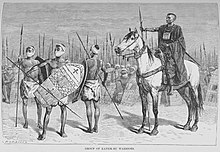
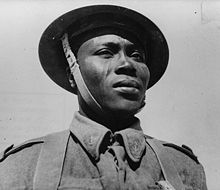
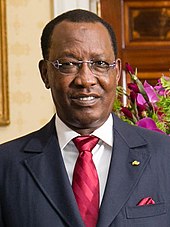

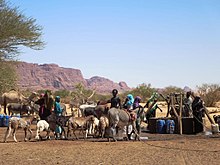
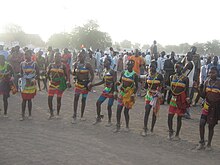
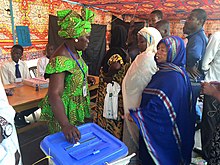
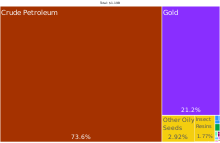



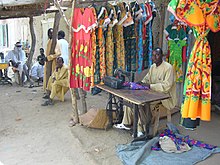

Chad (name)Chad (disambiguation)ArabicFrench Coat of armsLa TchadienneN'DjamenaEthnic groupsKanembuMasalitToubouBidiyoBulalaMundangZaghawaTupuriBagirmiMasmajeother ChadianChristianityno religionAnimismDemonym(s)ChadianGovernmentUnitarysemi-presidentialrepublichereditary dictatorshipPresidentMahamat DébyPrime MinisterAllamaye HalinaNational Transitional CouncilIndependenceFranceColonyPopulationCentral African CFA francWest Africa TimeDrives onCalling codeISO 3166 codeInternet TLDlandlocked countryCentral Africathe norththe eastCentral African Republicthe southCameroonthe southwestNigeriaLake Chadthe westcapitaltwentieth largest nation by areaSaharaSudanian Savannawetlandethniclinguistic groupsreligions practiced in Chadtrans-Saharan tradeFrench Equatorial AfricaFrançois Tombalbayecivil warthe rebelsHissène HabréChadian–Libyan conflictOperation ÉpervierIdriss DébyChad National ArmyDarfur crisisdestabilised the nationSudanese refugeesNational AssemblyPatriotic Salvation MovementauthoritarianFACT rebelsTransitional Military Councilpolitical violencecoups d'étatHuman Development Indexleast developed countrypoorestmost corruptsubsistence herders and farmershuman rights recordHistory of Chad7th millennium BCAfrican archaeologicalBorkou-Ennedi-Tibesti RegionKanem–Bornu EmpiresedentaryKanem EmpireSahelianSultanate of BagirmiWadai EmpireMuslimFrench rule in ChadFree FranceWorld War IIoverseas territoryChadian assemblyChadian Progressive PartyNational Liberation Front of Chadoverthrown and killedinvolved in Chad's civil warended in disasterSenegalnew constitutionreferendumcompetitive presidential electionsecond termnew civil warunilaterally modified the constitutiona third mandateUnited Nations High Commissioner for RefugeesgenocideDarfurIn 2006in 2008West African coalitionBoko Haramincursion

